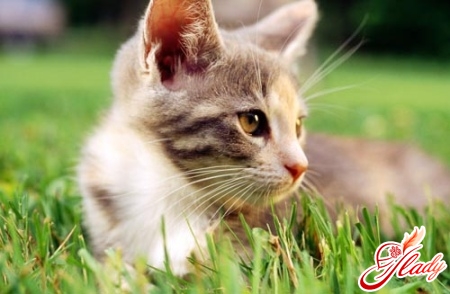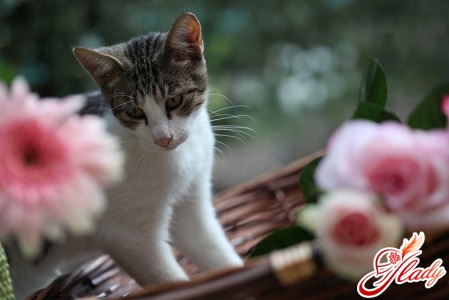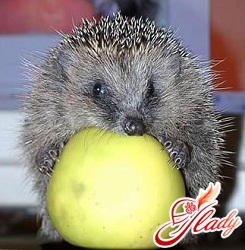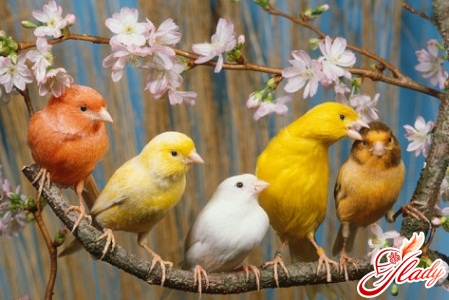 They say that birds singing is very beneficial.affects human health, both mental and physical. This is probably why people have kept such feathered singers as canaries in their homes for a long time. Over the long history of domestication of these birds, they have become unpretentious pets that are undemanding to maintenance and feel great even in cramped conditions. At the same time, they sing almost all year round and reproduce well. However, this does not mean that canaries can be kept "anyhow". For the comfortable existence of these birds in captivity, certain requirements must still be met. So, canary - care "according to the rules".
They say that birds singing is very beneficial.affects human health, both mental and physical. This is probably why people have kept such feathered singers as canaries in their homes for a long time. Over the long history of domestication of these birds, they have become unpretentious pets that are undemanding to maintenance and feel great even in cramped conditions. At the same time, they sing almost all year round and reproduce well. However, this does not mean that canaries can be kept "anyhow". For the comfortable existence of these birds in captivity, certain requirements must still be met. So, canary - care "according to the rules".
Rule one. Addiction
Like any living creature, thisThe small bird must get used to its new habitat (which will be your home). The adaptation period will last about two weeks, and depending on the temperament of your bird, it will either be bored all this time or show excessive anxiety. Therefore, try not to disturb it during this period, but place the cage in a quiet place with dim lighting and give it the opportunity to calmly get used to the new conditions. If you have acquired a pair (or more) of birds, then place the male in a separate cage, and the feathered "ladies" can be placed together. Place the cage with the bird so that children and pets cannot get to it. Their curiosity will be quite understandable and excusable, but for a canary such a premature acquaintance can be a real shock. By the way, when choosing a place for the cage, keep in mind that these birds do not tolerate drafts.
Rule two. Accommodation
Actually, it would be more correct to call this rule the first one. Since first of all it is important to properly arrange the house for the canary: it should have certain dimensions and be equipped with the necessary inventory.
All in all, this will be enough.so that your singer feels good in her new home. It is worth adding that it is best to buy the inventory together with the cage so that they fit each other in size. And the floor of the cage (the sliding tray) should be covered with a thin layer of sand or covered with a paper hygroscopic sheet, the cage should be cleaned two or three times a week.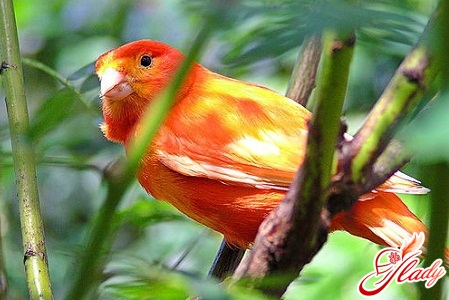
The third rule. Food
It should be noted that when overfeedingBirds are prone to obesity (oddly enough). Of course, it looks a little different than in mammals, but the fact remains. Therefore, you need to feed your small bird every day, giving it one or two teaspoons of dry food. You can feed less often, every other day, but give twice as much food. Obesity in birds can occur not from the amount of food eaten, but from its quality. Therefore, experts advise including the following products in the canary's diet.
To make sure your bird eats everything you give it(and not just choose tasty morsels) and at the same time not get fat, it is necessary to strictly adhere to the daily food norm, slightly increasing it during the molting period. Also remember about the high metabolism of small birds (and a canary is just a small bird) and therefore make sure that the feeders are always with food. You need to change the grain feed and water in the cage in the morning. And if you give the bird soft food (porridge, boiled eggs, cottage cheese), then it should be changed twice a day so that the mixture does not turn sour.
Rule four. Hygiene and health
By and large, these are, although gentle,Canaries are fairly unpretentious birds - caring for them is not burdensome. And yet, you need to monitor the physiological condition of your canary. To check its fatness, the presence and intensity of plumage change, conduct periodic inspections of the bird. To do this, carefully take it in your hands, fixing the head with the middle and index fingers and turn it upside down. Lightly blow on the area not covered with feathers (apteria). During molting, stumps from fallen or tassels of newly growing feathers will be visible in this place. Here on the abdomen, you can check the condition of the subcutaneous fat. During molting, it disappears in birds, and the rest of the time it covers the apteria up to half. If the apteria is completely covered with fat streaks, then your bird has begun to "gain excess weight." In this case, reduce the amount of soft protein feed, giving preference to grain and greens. For the well-being of the canary, it is important to observe the light regime, which affects the volume of singing, readiness for reproduction, and the duration of molting. In winter, the length of daylight should be increased artificially, pouring it up to fourteen hours, and in March - up to sixteen. From mid-summer, daylight should begin to decrease. The molting period of canaries lasts up to three months. During this time, the bird's body is rebuilt and it needs food rich in vitamins and minerals. Young birds change their plumage to a bright and shiny adult outfit. This is a partial molt. Adult birds molt completely. With the correct light regime, the canary molts once a year. With more frequent molting or feather loss, it is imperative to transfer the bird to a short daylight (up to nine hours). As you can see, caring for canaries does not cause much trouble. Therefore, if you decide to get this songbird, do not be afraid of possible difficulties, but just follow simple rules of care. However, remember that only the male canary sings (but how he sings!). And one more little piece of advice-reminder. Canaries sing early at dawn. If you need a good alarm clock, then a canary will perfectly replace it. And if not, just cover the cage with a blanket in the evening. We recommend reading:





